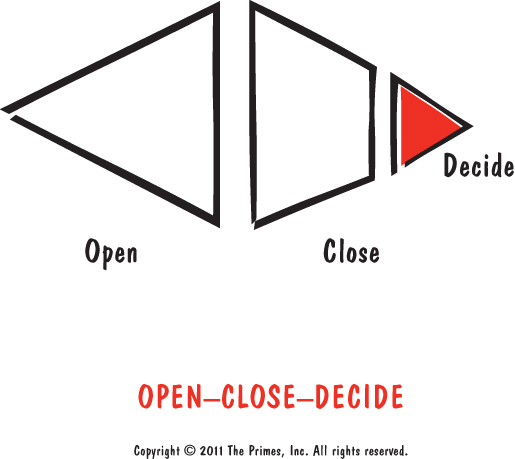
How do groups actually make decisions?
In the late 1980s, I got involved in IBM's development of what we called “group decision support systems” (GDSS). Though I had the money and technical capacity I needed, I lacked a true understanding of how groups made decisions. After conducting exhaustive research and discussing the matter with various psychologists and behaviorists, I found myself more confused than ever. Someone gave me a copy of Michael Doyle's book How to Make Meetings Work, which he coauthored with David Strauss. The book prompted me to reach out to Michael Doyle.3
Michael introduced me to Kai Dozier, and together they gave my group the insight we needed to develop our GDSS products: the OPEN–CLOSE–DECIDE PRIME. Once it had been revealed, I saw it everywhere, from boardrooms at J. P. Morgan to a group of friends trying to decide where to grab lunch. Whether the choice is a risky product launch or which dress to buy, OPEN–CLOSE–DECIDE is at work.
Michael and Kai explained that there is an initial period of time when groups tolerate the generation of ideas (OPEN). Brainstorming is an effective technique for structuring discussion during the OPEN phase. But the group eventually becomes less tolerant of new ideas and begins to prioritize and converge (CLOSE). Members of the group spend most of this phase arguing the merits of increasingly fewer choices. ...
Get The Primes: How any Group can Solve any Problem now with the O’Reilly learning platform.
O’Reilly members experience books, live events, courses curated by job role, and more from O’Reilly and nearly 200 top publishers.

